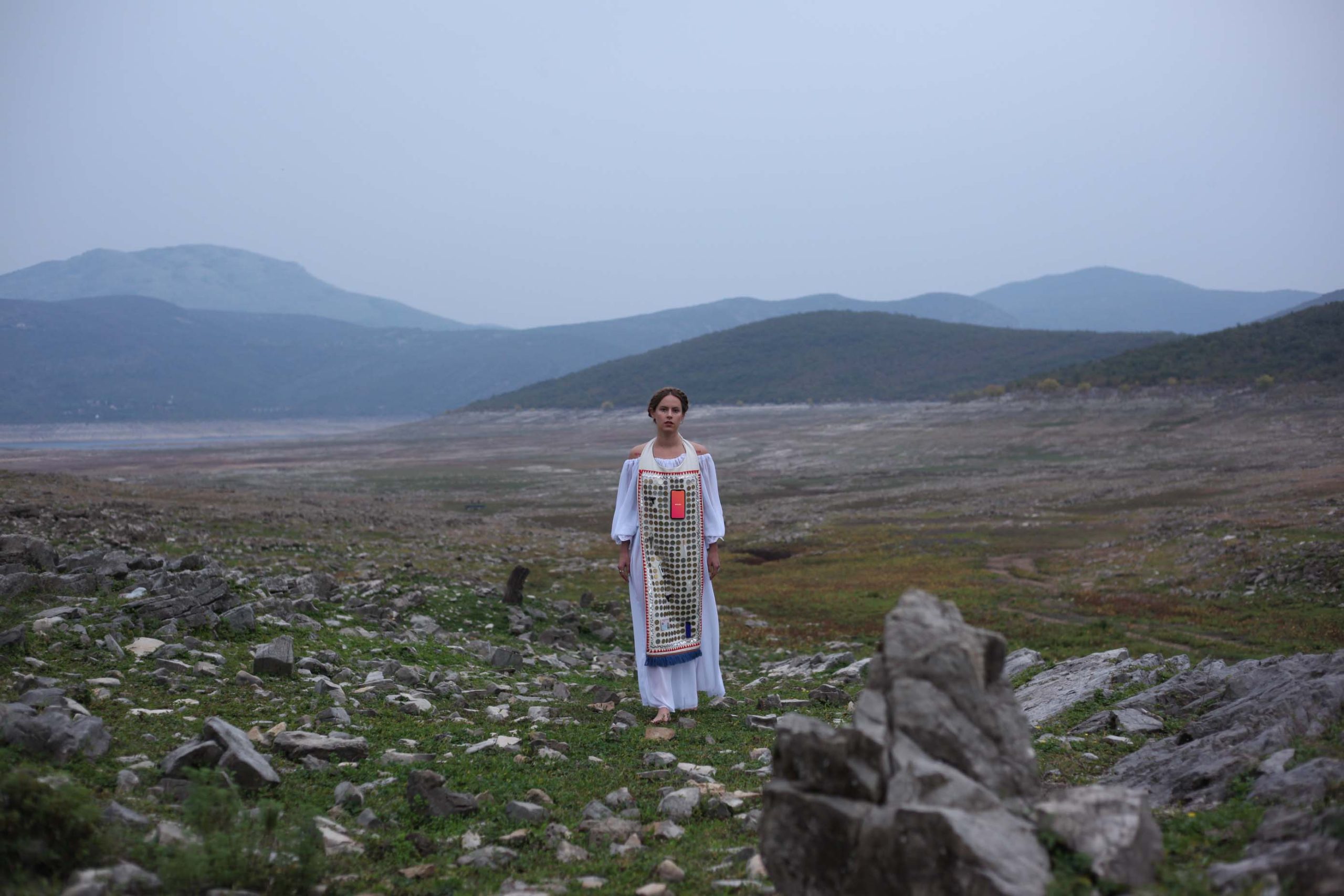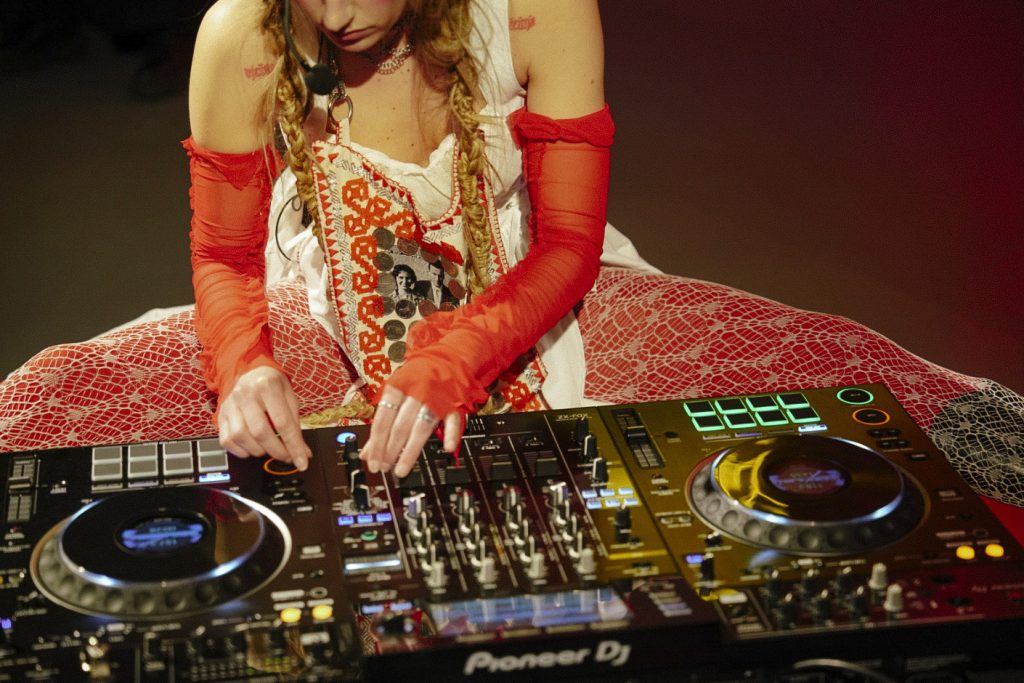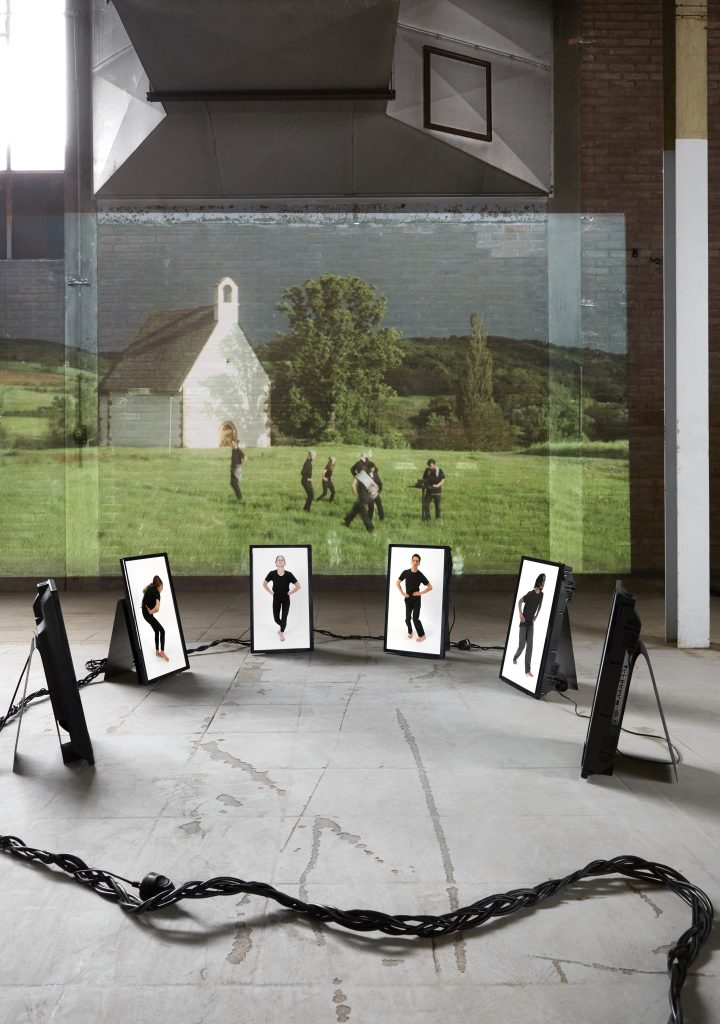Exploring the evolution and impact of the traditional Croatian dance.
Published June, 2024
by Tiiu Meiner

Written by Tiiu Meiner
The ways we move our bodies are deeply ingrained in us and influenced by cultural teachings. These movements, collectively shared and practiced, play a significant role in shaping our societies, becoming living repositories of our cultural heritage. Delving into the origins of these movements and the ideals they propagate is essential to understanding their impact.
Ines Borovac, a Croatian designer and artist, embarked on a journey to unravel the significance of folk dances in her country, particularly the Kolo, and its role in shaping the society she grew up in. Kolo is a traditional Slavic folk dance practised across various Balkan regions. While the dance varies slightly according to the region, the central configuration involves dancers forming and spinning in circles, moving rhythmically to lively music, symbolising unity and community. Popularised in the 1930s under Socialist rule, these dances held immense cultural significance in rural Balkan communities, serving as both a form of communal celebration and physical expression. By the 1950s in Croatia, Kolo dances had transitioned from casual, informal gatherings to staged performances, solidifying them as a national heritage. However, this transition froze the evolution of this tradition, halting the potential for the dance to adapt and reflect evolving societal values.
Upon moving to the Netherlands, Ines encountered a different cultural landscape where her love for techno music and rave culture was no longer a subculture, as it had been in Croatia, but an integral part of the mainstream cultural scene. This shift highlights the broader difference between Western and Balkan cultures, even among young people. While techno and raves are popular in both regions, mainstream cultures in the Balkans, like the one in Croatia, still maintain a strong collective focus on more traditional genres, with folk dance among them. In contrast, in the Netherlands, such traditional dances have largely fallen out of mainstream cultural practice.
Within this gap between Balkan and Dutch culture, Ines found an opportunity to blend her Croatian heritage with contemporary Western forms of expression. By infusing elements of Croatian folk dance into the techno scene, she unearthed hidden societal values and challenged the notion that leaving one’s homeland necessitates abandoning one’s identity. Her innovative approach not only celebrates heritage but also inspires dialogue on the complexities of identity and belonging in an increasingly globalised world. By bridging traditional practices with contemporary contexts, she honours her heritage and offers a vision for the future where cultural diversity is celebrated and cultivated.
Tiiu Meiner: Ines, can you tell us how your journey into folk dances started? What led you to choose Kolo specifically for your exploration and questioning?
Ines Borovac: My journey with the Kolo dance began in 2020, but my fascination with the body’s role in culture started much earlier. Growing up in a patriarchal environment, I noticed how constricting biases were imposed on me and my body as a woman, while male bodies were allowed freedom to be dominant and even violent. With the prevalence of domestic violence and sexism in the Balkans, I became determined to understand how our bodies are taught certain roles and behaviours, taking traditional dances such as Kolo, which supposedly ‘represent’ or ‘reflect’ the nation and its norms, as a starting point. Empowered by this understanding, I set out to challenge and reimagine Kolo as Collo, hoping to create dances free from chauvinistic views.
TM: When I search for ‘Collo dance’ online, it corrects me to ‘Kolo dance.’ Why do you call it Collo?
IB: That’s an intentional choice. While “Kolo” means “wheel” in Croatian, its modern equivalent is “kotač.” Originally, “Kolo” referred to circular objects like a potter’s wheel, but now is associated with the folk dance. Understanding that the meaning of words can change as societies and their values evolve, I decided to usher in a new step for Kolo by adapting it to “Collo.” This change acknowledges that cultural traditions evolve over time and encourages new interpretations that are less insular and more open to new participants.
TM: How did you explore the relationship between the body and societal norms through the traditional Kolo dance?

IB: Working with a dance movement therapist, we used the Labanotation method to deconstruct the Kolo choreography step-by-step. Originally developed to document and analyse human movement, Labanotation has evolved into a valuable tool for documenting dances and analysing movement in dance therapy. It uses clear parameters—direction and level of movement, body part, duration, and dynamic quality—to understand bodily conditions and their mental reflections.
We embodied these dances to connect with the non-verbal language and socio-political context of Croatian dancing bodies. Our analysis aimed to understand how folk dances communicate, represent the Croatian body and perpetuate social values.
We observed and replicated recordings from traditional Kolo performances, discussing how each movement felt, what it conveyed to viewers and the non-verbal dialogue between dancers. This approach helped us uncover the somatic meanings and social dynamics within these traditional dances, offering insights into the collective state of Croatian bodies.
TM: What did you discover through your body?
IB: We found strong Christian influences in Kolo, emphasising a straight spine and avoiding suggestive hip movements. This shows how the dance perpetuates certain ideals regarding sexuality and societal behaviours based on Christianity. These ideals can be traced to the ways that the dances convey themes of heteronormativity, vitality, pride, and strength, as well as fertility and endurance.
We also discovered significant insights into gender roles. Traditionally, Kolo gatherings were moments for young men and women to meet, with men selecting partners based on physical attributes. Women were valued for their strong leg work, seen as indicators of good health and suitability as landkeepers and wives.
For me, engaging in these dances with the dance therapist felt foreign and disconnected from my everyday gestures. My body struggled with the fast leg work and stiffness, alluding to how Kolo has fallen out of sync with contemporary Croatian society. The traditional values embedded in these dances contrast sharply with our modern values, underscoring the need for cultural practices to evolve.
TM: What inspired you to create new dances beyond these traditional restrictions?
IB: As I explored the history of Kolo, I noticed that many of its core ideals had remained unchallenged for generations. The evolution of Kolo seemed to halt after the 1950s when it transitioned from informal gatherings to staged performances. This change appeared to freeze its growth, turning it into a tool for promoting traditional ideas. However, attempting to preserve a culture’s expression unchanged over time leads to a misalignment, where traditional values can become distorted in a new context.
In today’s Croatia, the dance has increasingly become a platform for normalising and enforcing outdated patriarchal and nationalist values rather than serving as a genuine form of cultural expression and togetherness. Recognising both the constraints of these norms and the importance of collective and heritage dances, I embarked on a mission to rejuvenate Kolo, presenting it with a fresh perspective for today’s audience as Collo. Teaming up with a music producer friend, Marko Milas, we blended traditional Kolo dance music with techno beats. This allowed me to shine a new light on the traditional cultural dance while accepting that it needs to reflect on itself and incorporate more inclusive, somewhat new ideas too.

TM: A significant part of your performance involved the leader of the Collo. Can you explain this role and how you subverted it?
IB: In modern terms, think of this leader as a host or DJ, but for folk music. They guide the dancing group with set instructions, shaping the atmosphere and moves. But digging deeper into these instructions, I found they were advocating pretty old-fashioned, restrictive stereotypes about gender and sexuality. I rewrote the commands to encourage movements and ideas that challenge stereotypes and promote open-mindedness and equality. Then, I performed this new Collo dance in front of an old traditional church in Croatia, taking on the role of the Collo leader myself. By casting a woman in this leadership role, the script on traditional gender roles is flipped, promoting movements that break barriers and welcome new power dynamics.
TM: Can you say more about why techno music and folk tunes were a fruitful mix for you?
IB: Balkan regions prize folk dance as a vital link to their heritage, identity, and community, while Western cultures like the Dutch have moved towards more individualistic and modern forms of cultural expression, where traditional folk dances play a less central role. However, there is a large acceptance of techno music and rave culture in the Netherlands, which is a form of dancing together and creating communities despite dancing alone. Since a young age, I have found my own liberation in the techno and rave scene in both Croatia and the Netherlands, and I wanted to strengthen this link to liberation for folk dance, too. I thought this blend of music and its associated ideals could be a fertile ground for me to bring the folk dance back in touch with younger generations.
In this way, I want to stay connected to my roots while exploring new artistic horizons that aren’t restricted by this framework of cultural heritage. I want to continue bridging the past and the future by remixing folk songs with techno music, loosening the rigid role of the dancers and inviting people to find meaning in their heritage on their own terms.
TM: What’s next for you? How do you see your work evolving?
IB: Looking ahead, I’m exploring ways to infuse my cultural background into new projects while embracing artistic exploration. One of my upcoming ventures involves questioning norms and expectations of female sexuality and romance as I live-stream the dates I go on in the Netherlands to my hometown in Croatia. The audience back home can send in commands, creating a direct bridge between the dating culture in Croatia and the Netherlands. I am curious about what kind of friction and enlightenment this juxtaposition of dating norms will unveil.
I also recently learned to DJ, and while my inspiration still draws from folk traditions, I’m finding ways to incorporate them more subtly into my music projects, letting them serve as a foundation upon which to build rather than only focus. Ultimately, I want to create work that feels liberating and meaningful to my transnational identity, moving beyond simple stereotypes and rigid ideologies.
This article is brought to you as part of the EM GUIDE project – an initiative dedicated to empowering independent music magazines and strengthen the underground music scene in Europe. Read more about the project at emgui.de.
Funded by the European Union. Views and opinions expressed are however those of the author(s) only and do not necessarily reflect those of the European Union or the European Education and Culture Executive Agency (EACEA). Neither the European Union nor EACEA can be held responsible for them.